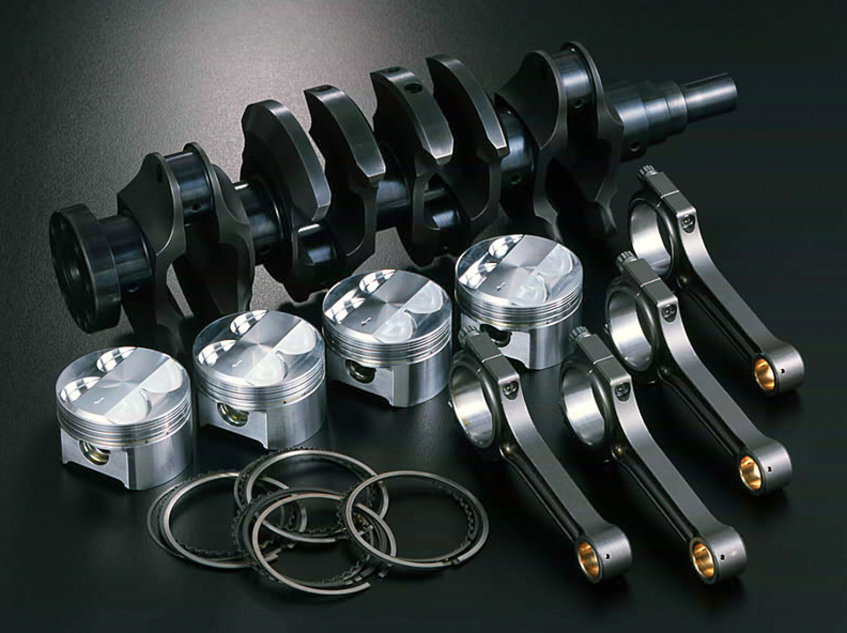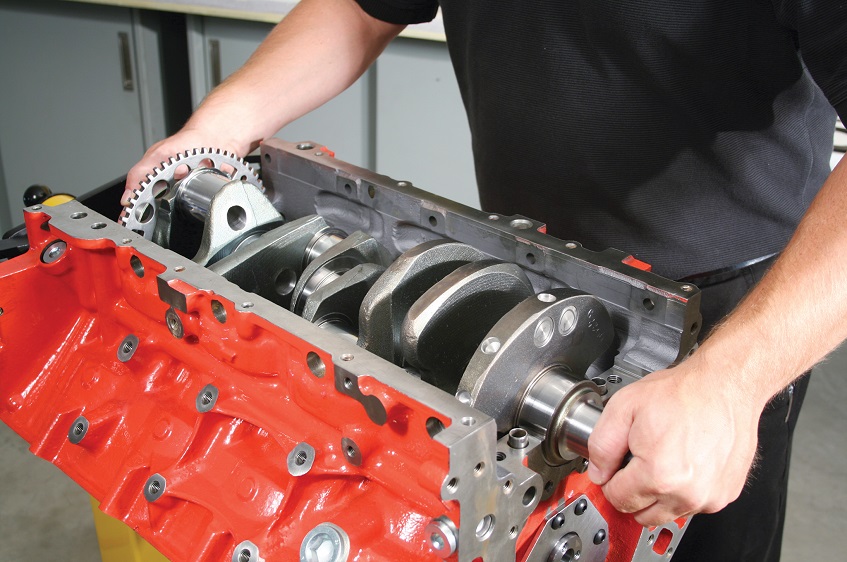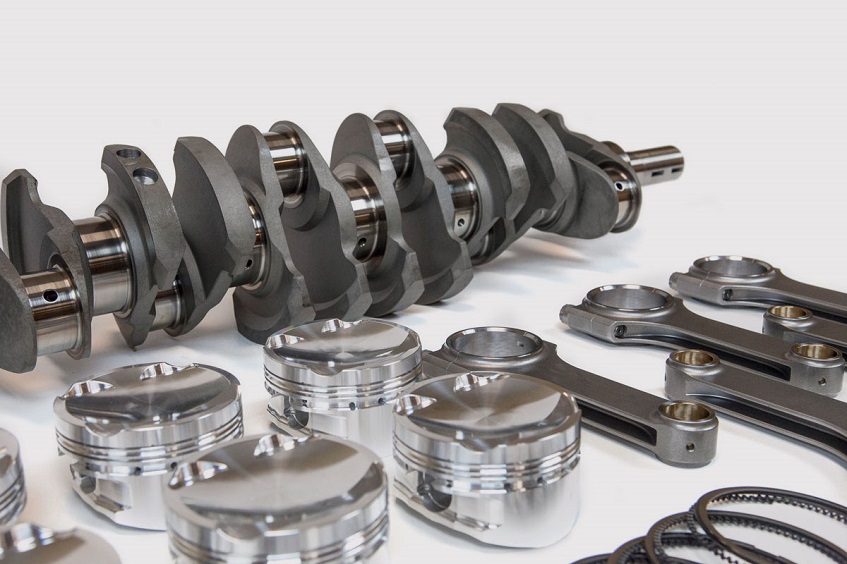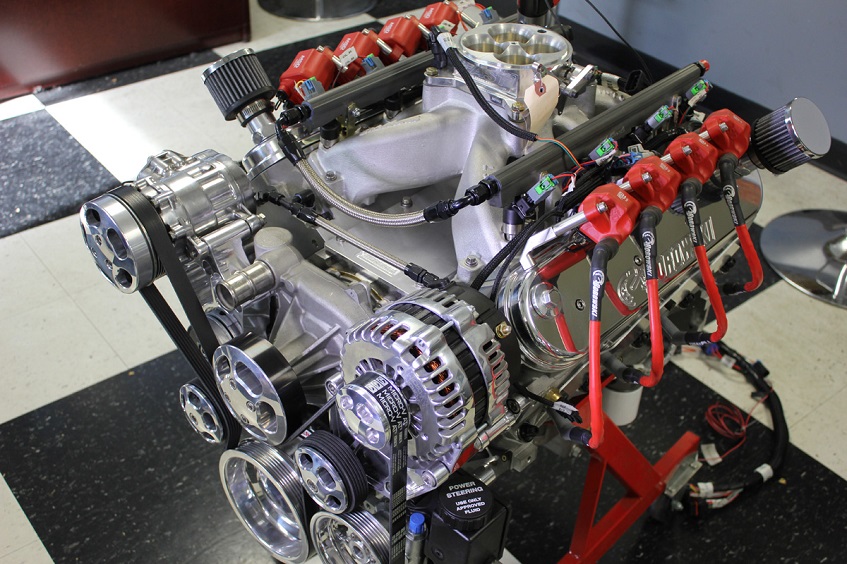
Stroker Kits Guide: Optimize Engine Performance
Who doesn’t want more power and low-down torque from their engine? Modifications to stock engines have existed as long as the internal combustion engine itself, and are often carried out by racing enthusiasts with a little more knack in getting the power increase they need. With engines today going down the downsizing path, there’s the tendency to see the lower displacement helped out by one or two turbines to force more air in the cylinders. Peak power is produced relatively high in the rev range, so you’ll be having your right foot down longer until you get some push. The alternate path to all this is to increase engine displacement. This is where stroker engines and stroker kits come into play.
Contents
What is a Stroker Engine?

In basic terms, a stroker engine is one with an increase in displacement in cubic centimetres. This is usually done by increasing the piston stroke, or how far down the piston travels in the cylinder block. The further down the piston goes, the more space available for a bigger air and fuel mix to be combusted. So, we get a bigger bang, and more power to turn the crank.
Stroking an engine to increase the displacement can be done in two ways. One is the so-called offset grinding of the crankshaft, or more precisely the rod journals, and involves moving the centreline of the rod journal away from the centreline of the main journal. Effectively this increases the crank throw, and pulls the piston lower. Slight changes to the angles at which the rod journals are ground can produce some interesting increases in overall horsepower and torque. The other way to get a stroked engine is to replace the stock crankshaft with something bigger. Though such changes weren’t intended by engineers when initially designing the engine, racing enthusiasts have found ways around the limitations of the stock engines to get more power. What is involved is complex maths, and how all the modified parts work with each.
To rule out any complications, and pistons smashing their way inside the engine, manufacturers have come up with packaged stroker kits. They’ve done all the complex calculations and removed the guesswork, so you save money and time, not to mention the frustration of pairing internals that just don’t get along with each other.
What do Stroker Kits Contain?
A typical stroker kit, regardless of the vehicle and stock engine, contains a stroker crankshaft, paired with performance connecting rods and strengthened pistons. The crank is nitride treated for better wear and balanced to prevent any knocks or vibrations. Modifications are also done to piston crowns to prevent them from damaging the cylinder head or the valves. Additional parts like an upgraded piston and wrist pins also feature in most packaged stroker kits. You can find kits suitable for both naturally-aspirated or turbo engines with parts engineered to achieve the right compression ratios.

Benefits of Stroker Engines
An engine with a stroker kit fitted has obvious advantages over the stock offering. By increasing overall displacement, engines achieve better low-down torque and higher power output. They’ll have more space for more fuel and air to be combusted. Getting the power early in the rev range also means the vehicle picks up speed faster. The compression ratio, or the volume of the cylinder with the piston set at the bottom dead centre as opposed to the volume of the cylinder at the top dead centre, also increases. Besides the increase in torque, the higher temperatures that come with higher compression ratios mean better combustion and increased fuel efficiency.
You can also choose to de-stroke an engine, or reduce the engine capacity. Again, modified crankshafts will be the determining factor here as well as performance grade pistons and shorter connecting rods. The benefit of a de-stroked engine is the reduced compression ratio, allowing for fitting a turbo to a naturally-aspirated engine, or a beefier turbine in an engine that already has forced induction. The engine will lose on low down power and torque, but can reach higher redlines. This improves the effectiveness of the turbo, in cars such as the Ford Barra.
Are There Any Disadvantages?
There are however some downsides to swapping out parts for a stroker kit. The most obvious is that there’s a lower redline, so the engine can’t spin as fast. If you only need low-down torque, say in racing a performance machine, then this shouldn’t be too much of an issue. Another, and the more concerning problem is increased wear. Parts in stroker kits are made of better quality material and build (not necessarily a disadvantage) but need to be used with special oils, and often changes to camshafts and fuelling are required to balance things out. Failing to pair parts properly can lead to audible knocking and shorten the life cycle of the parts. In addition, you’ll most certainly need higher octane fuel. This is all good in the applications stroker engines are intended for – high-performance vehicles that would require frequent maintenance anyway. Lastly, do your research on what you want to achieve with the stock engine before shelling out some serious cash.

Final Thoughts
With small-displacement Japanese cars already primed for better performance, changing the engine internals with a stroker kit generally increases overall engine capacity in the vicinity of 10 to 15 per cent. And this is in the existing engine block. The gains are obvious in cars like the Nissan Skyline and Toyota Supra, as well as some homegrown favourites like the mentioned Ford Barra or the Nissan-derived RB30 engine in the mid 80s Commodore. Stroker kits are also available for the bigger V8s. Consider the performance figures you want and concoct your mixture carefully to get the best results.


No Comments